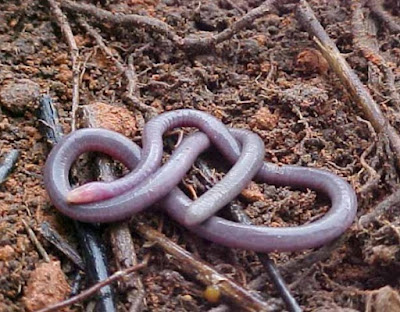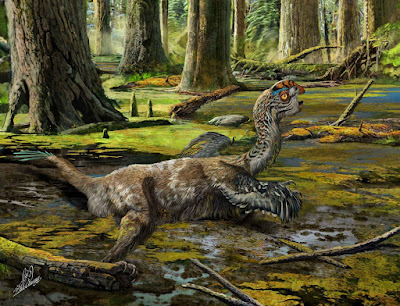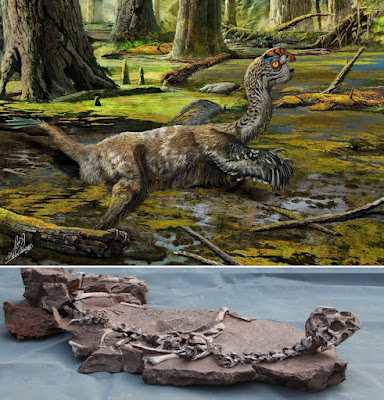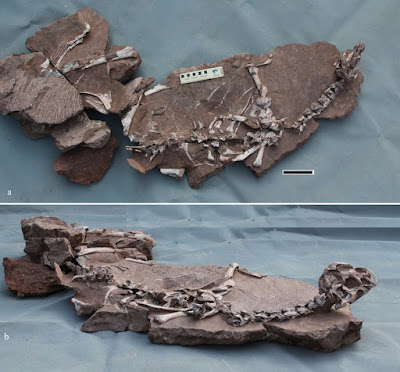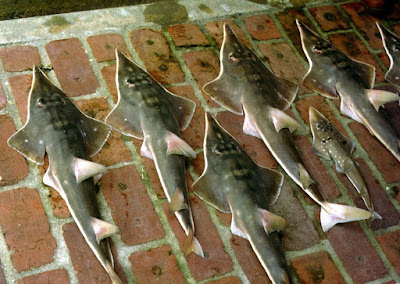[Most Recent Entries] [Calendar View]
Tuesday, November 15th, 2016
| Time | Event | ||
| 1:02p | [Herpetology • 2009] Brasilotyphlus guarantanus • A Second Species of Brasilotyphlus (Gymnophiona: Caeciliidae) from Brazilian Amazonia
Abstract Brasilotyphlus is rediagnosed in light of the discovery of a second species of the genus, Brasilotyphlus guarantanus sp. nov., in the municipality of Guarantã do Norte, state of Mato Grosso, Brazil. The new species differs from B. braziliensis mainly in annular counts, having 151–170 primaries and at most 2 secondaries (instead of 142–147 primaries and 23–36 secondaries). Key words: Amazonia, Brazil, Brasilotyphlus, Brasilotyphlus guarantanus sp. nov. Diagnosis: A Brasilotyphlus with maximum known total length of 305 mm; 47–76.1 times the width at midbody. Primary folds 151–170, secondary folds 0–2. The first nuchal collar is distinct dorsally and ventrally, the second is partly fused below with the first body collar. Two paired anal papillae may be present either side of midline just anterior of the vent. A weak vertical keel is present on the terminal part of the body of most specimens (in 27 of the type specimens). Maxillary teeth may reach the level of the posterior border of the choanae or extend slightly beyond them. Dermal scales present in folds in the posterior part of the body. Etymology: The name of the species refers to the type-locality, Guarantã do Norte, state of Mato Grosso, Brazil. Adriano Oliveira Maciel, Tamí Mott and Marinus Steven Hoogmoed. 2009. A Second Species of Brasilotyphlus (Amphibia: Gymnophiona: Caeciliidae) from Brazilian Amazonia. Zootaxa. 2226; 19-27. Resumo: A diagnose do gênero Brasilotyphlus é redefinida a partir da descoberta de uma segunda espécie desse gênero, B. guarantanus sp. nov., no município de Guarantã do Norte, estado de Mato Grosso, Brasil. A nova espécie difere de B. braziliensis principalmente nas contagens de anéis corporais, possuindo entre 151 e 170 primários e no máximo dois secundários, enquanto B. braziliensis tem de 142 a 147 primários e 23 a 36 secundários | ||
| 1:20p | [Paleontology • 2016] Tongtianlong limosus • A Late Cretaceous Diversification of Asian Oviraptorid Dinosaurs: Evidence from A New Species preserved in An Unusual Posture Abstract Oviraptorosaurs are a bizarre group of bird-like theropod dinosaurs, the derived forms of which have shortened, toothless skulls, and which diverged from close relatives by developing peculiar feeding adaptations. Although once among the most mysterious of dinosaurs, oviraptorosaurs are becoming better understood with the discovery of many new fossils in Asia and North America. The Ganzhou area of southern China is emerging as a hotspot of oviraptorosaur discoveries, as over the past half decade five new monotypic genera have been found in the latest Cretaceous (Maastrichtian) deposits of this region. We here report a sixth diagnostic oviraptorosaur from Ganzhou, Tongtianlong limosus gen. et sp. nov., represented by a remarkably well-preserved specimen in an unusual splayed-limb and raised-head posture. Tongtianlong is a derived oviraptorid oviraptorosaur, differentiated from other species by its unique dome-like skull roof, highly convex premaxilla, and other features of the skull. The large number of oviraptorosaurs from Ganzhou, which often differ in cranial morphologies related to feeding, document an evolutionary radiation of these dinosaurs during the very latest Cretaceous of Asia, which helped establish one of the last diverse dinosaur faunas before the end-Cretaceous extinction.
Systematic Paleontology Dinosauria Owen, 184231. Theropoda Marsh, 188132. Maniraptora Gauthier, 198633. Oviraptorosauria Barsbold, 197634. Oviraptoridae Barsbold, 197634. Tongtianlong limosus gen. et sp. nov. (Figs 2, 3 and 4) Holotype: A nearly complete, three-dimensionally preserved skeleton with skull and lower jaws (DYM-2013-8). The specimen is accessioned at the Dongyang Museum, Dongyang City, Zhejiang Province. Type locality and horizon: The building site of the No. 3 high school of Ganxian (GPS coordinates are provided on request from the first author); Nanxiong Formation (Maastrichtian, Upper Cretaceous). Etymology: Tongtian, Chinese Pinyin, refers to Tongtianyan of Ganzhou, the first grotto south of the Yangtze River. Tongtian also means the road to heaven, a fitting epitaph for a deceased dinosaur preserved with outstretched arms. Long, Chinese Pinyin for dragon. Limosus, Latin for muddy, refers to the holotype specimen being found in an unusual posture in a mudstone (Fig. 5). Junchang Lü, Rongjun Chen, Stephen L. Brusatte, Yangxiao Zhu and Caizhi Shen. 2016. A Late Cretaceous Diversification of Asian Oviraptorid Dinosaurs: Evidence from A New Species preserved in An Unusual Posture. Scientific Reports. 6, Article number: 35780. DOI: 10.1038/srep35780 | ||
| 1:44p | [Ichthyology • 2016] Rhynchobatus cooki • A New Species of wedgefish Rhynchobatus (Rhinopristiformes, Rhinidae) from the Indo–West Pacific
Abstract A new dwarf wedgefish, Rhynchobatus cooki sp. nov. is described from a single female from a Jakarta fish market (Indonesia) and 11 specimens collected at Jurong fish market (Singapore). First collected in 1934, the broader ichthyological community have been aware of this distinctive but little known ray since the late 1990’s. Rhynchobatus cooki is the smallest of the wedgefishes (to 81 cm TL) and has the lowest vertebral count (fewer than 107 centra). It is also distinguishable from its congeners based on its long, hastate snout, very strongly undulate anterior pectoral-fin margin, coloration and aspects of its squamation. The dorsal coloration is mainly dark and distinctively marked with white blotches, spots and streaks, and has a dark cruciate marking on the interorbit and a prominent white border around the body margin. Unlike most other wedgefish species, the snout tip lacks dark blotches and there is no black pectoral-fin marking. It shares well-developed rostral spines with a much larger Atlantic species (Rhynchobatus luebberti), but these spines are confined to the snout tip (rather than being more numerous and extending in paired rows along the rostral ridges nearly to the eyes). No additional specimens have been observed since 1996, despite an increased recent effort to survey the chondrichthyan fauna of South-East Asia and collect biological data for species, raising concerns over its conservation status. Keywords: Pisces, Rhinidae, Rhynchobatus cooki, Clown Wedgefish, new species, Western Pacific Peter R. Last, Peter M. Kyne and Leonard J.V. Compagno. 2016. A New Species of wedgefish Rhynchobatus cooki (Rhinopristiformes, Rhinidae) from the Indo–West Pacific. Zootaxa. 4139(2); DOI: 10.11646/zootaxa.4139.2.7 |
| << Previous Day |
2016/11/15 [Calendar] |
Next Day >> |
